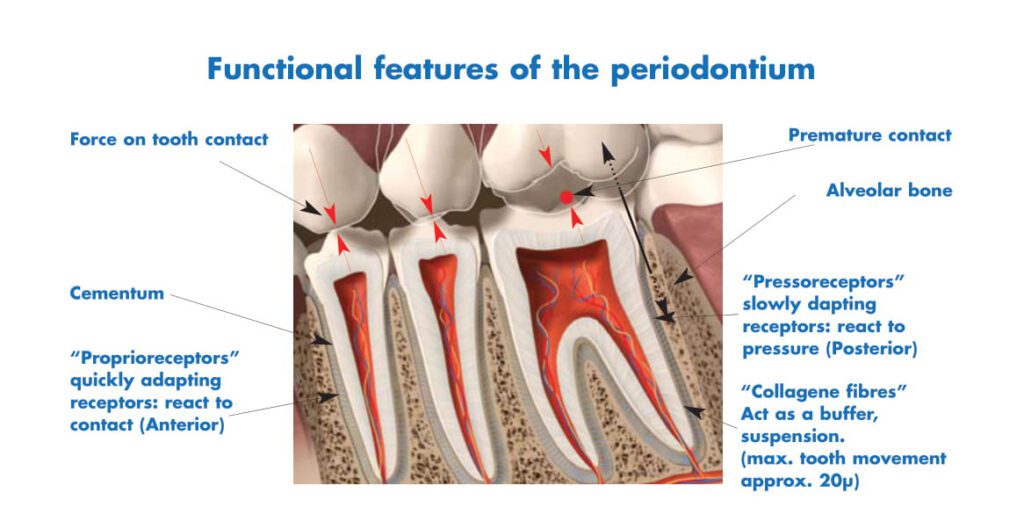
Every restoration, extraction, prosthetic device and orthodontic treatment changes the static and dynamic occlusion. Smallest occlusal interferences of just a few microns, are disruptive for the proprioreceptors of the stomatological system. This can cause bruxism (clenching or grinding), which can result in functional disorder of the cranio mandible system. Overstraining of teeth, periodontium, muscles and joints are the effect.

It is important not only to detect, but also to avoid further functional disorder in the cranio mandibular system. Smallest interferences in habitual occlusion can cause serious disturbances for the patient. Acute functional disorder such as clenching and grinding can become chronic in the long term.
Patients with new fillings, crowns and bridges or even after orthodontic treatment, who complain of typical symptoms (CMD-Syndrome), should undergo a specific examination of their occlusion. Premature contacts are often uncomfortable, as the proprioreceptors react sensibly under pressure. The patient will try to compensate for the occlusal interference by adapting to a new habitual position, with consequences for the attached tissue structures.


